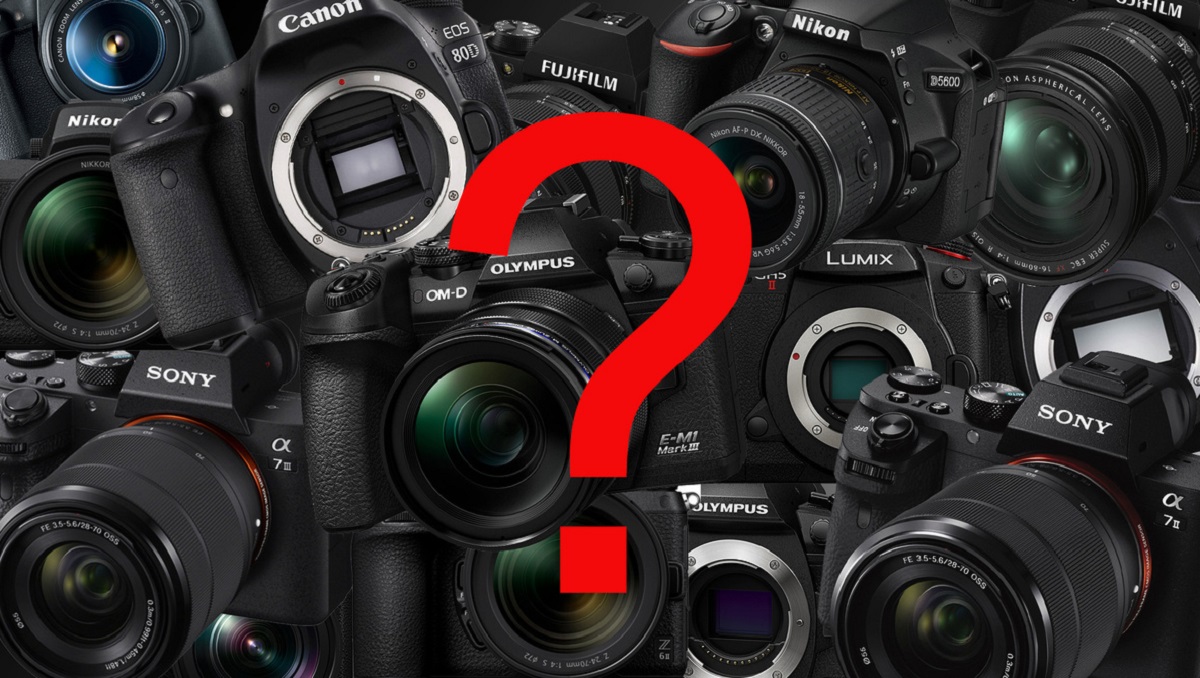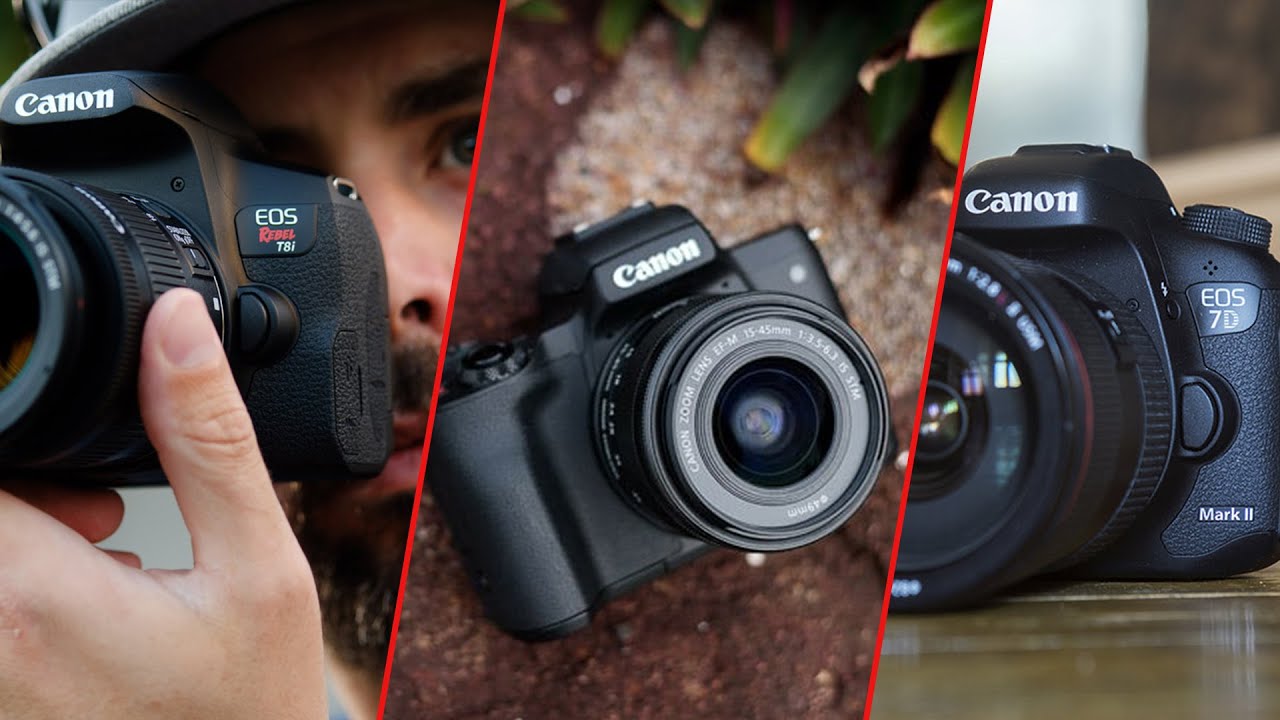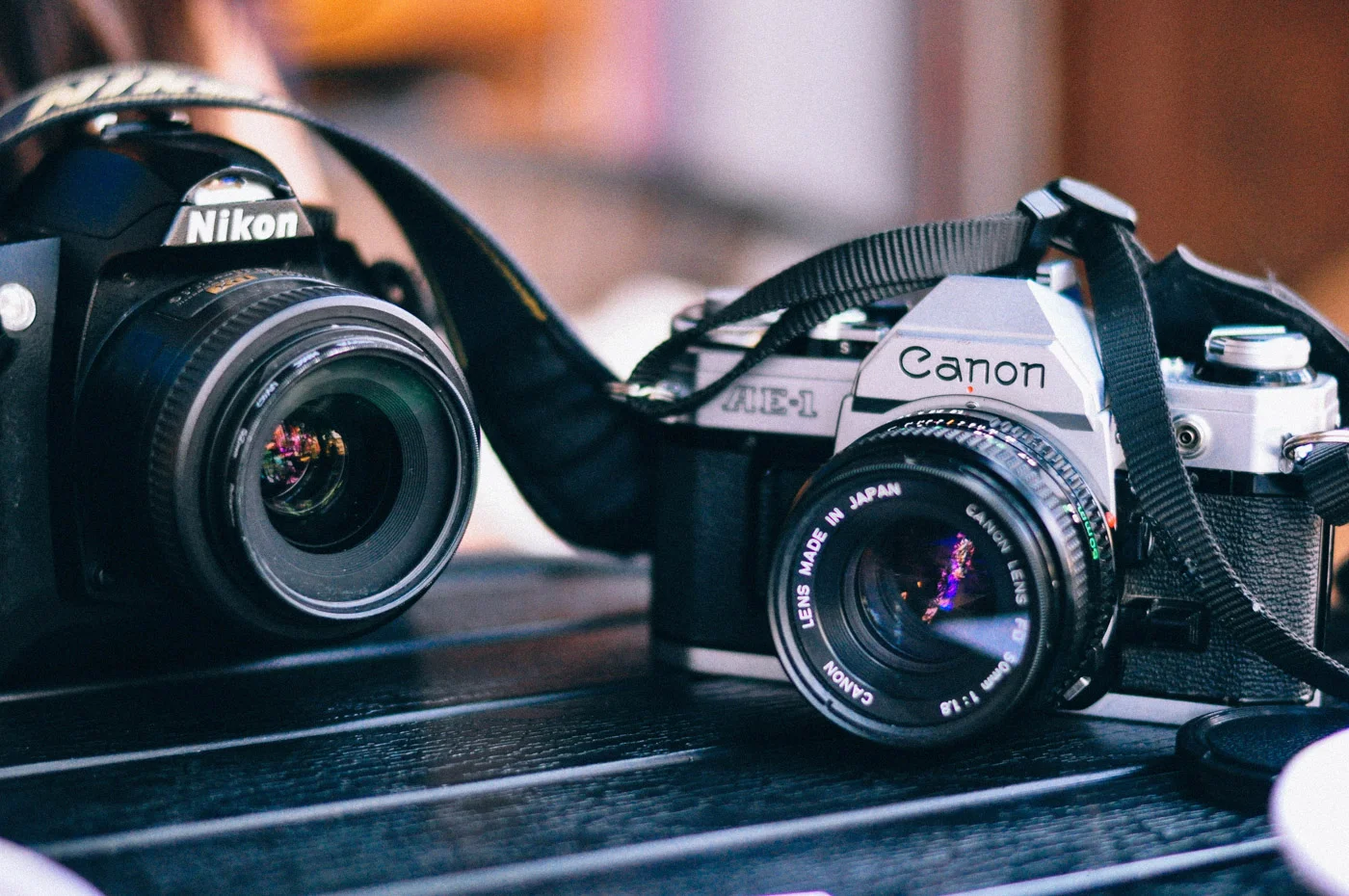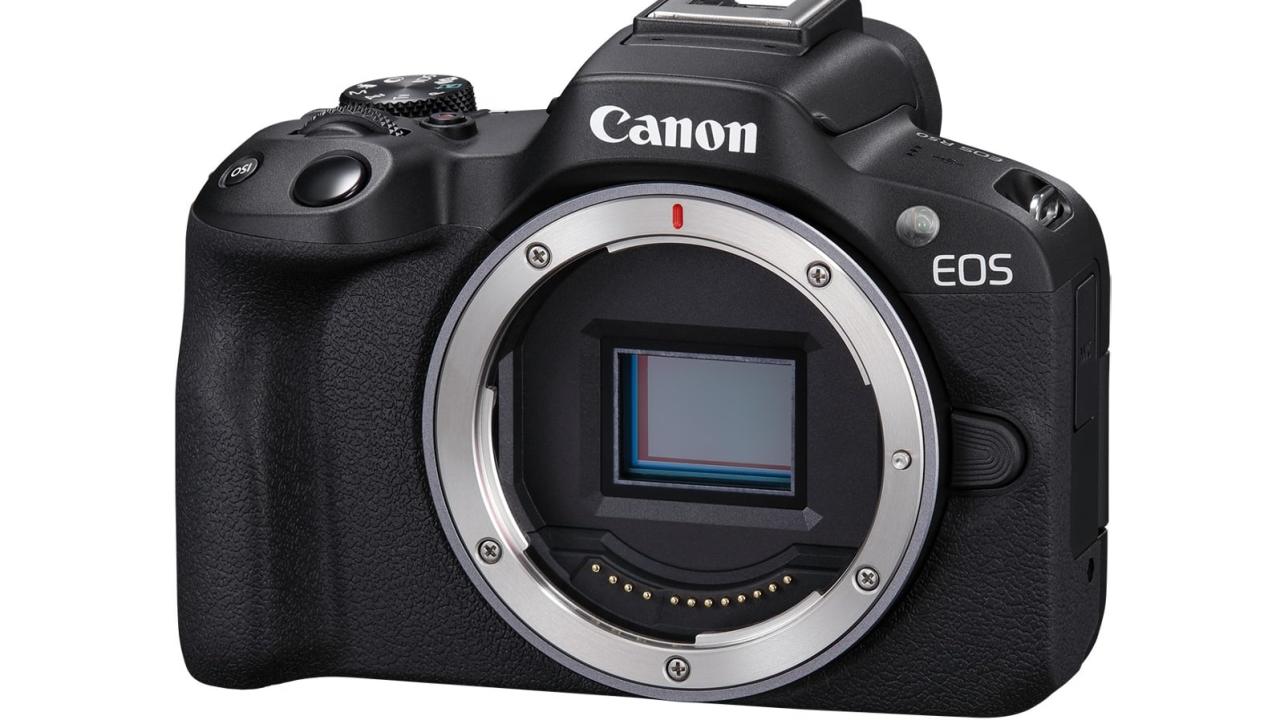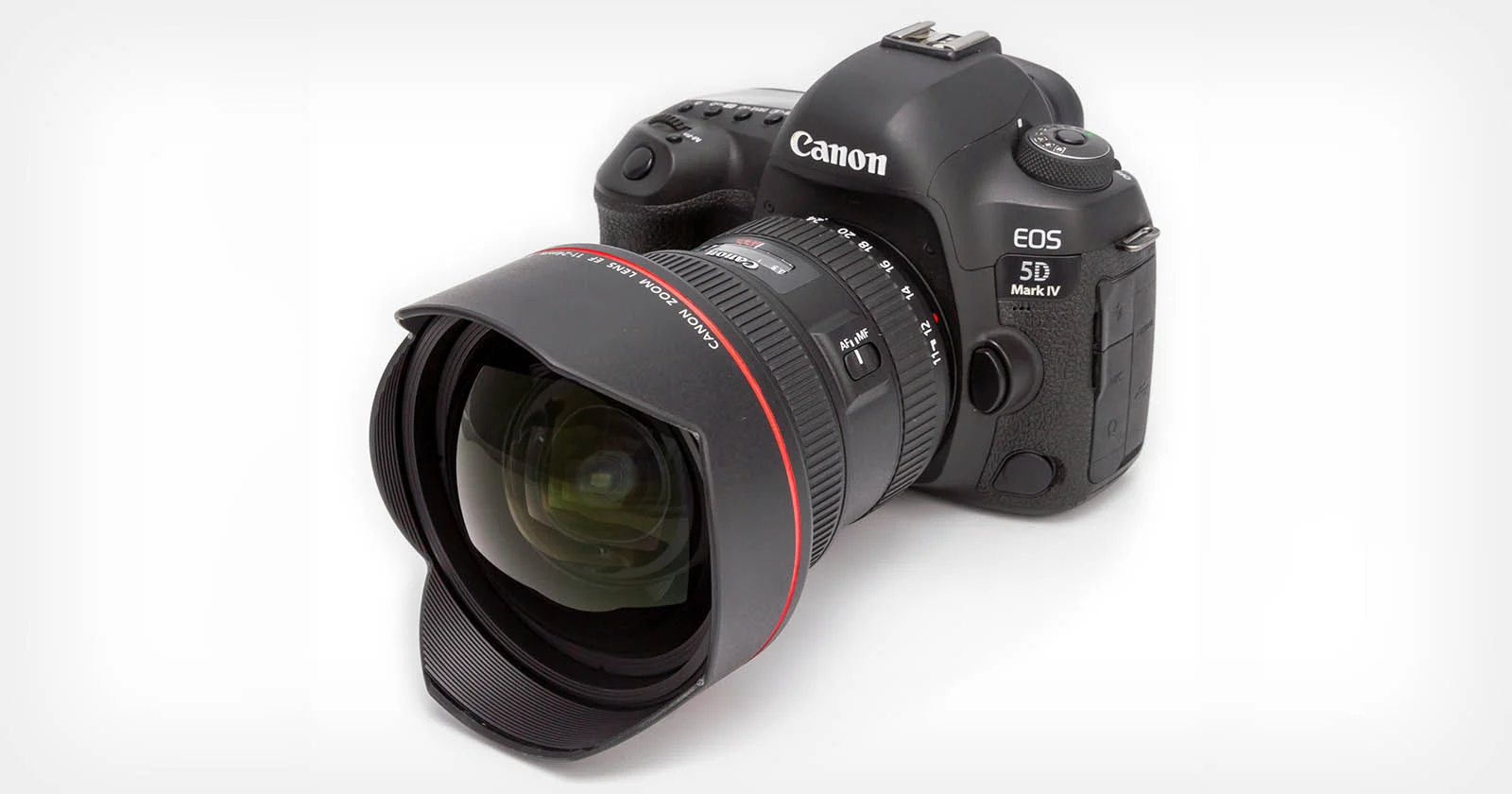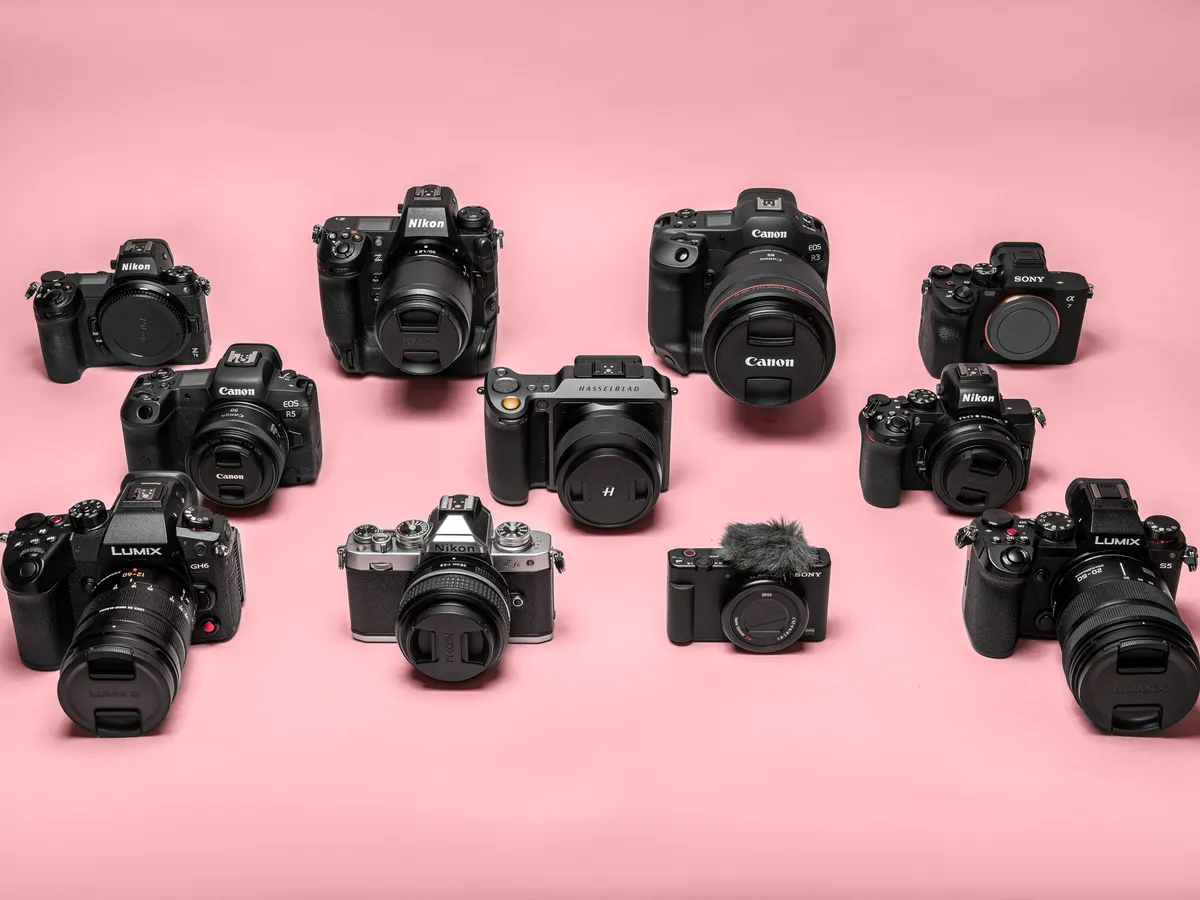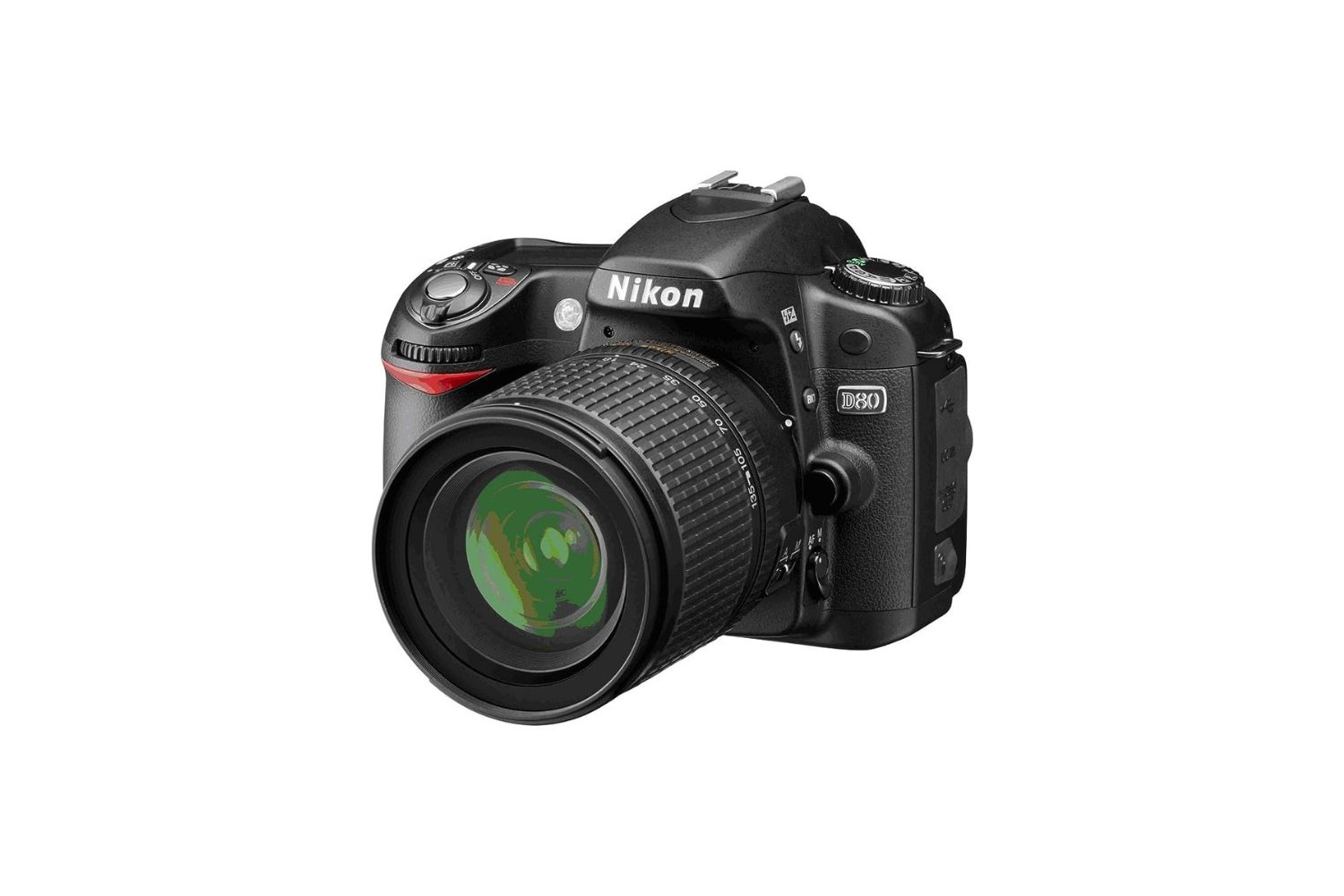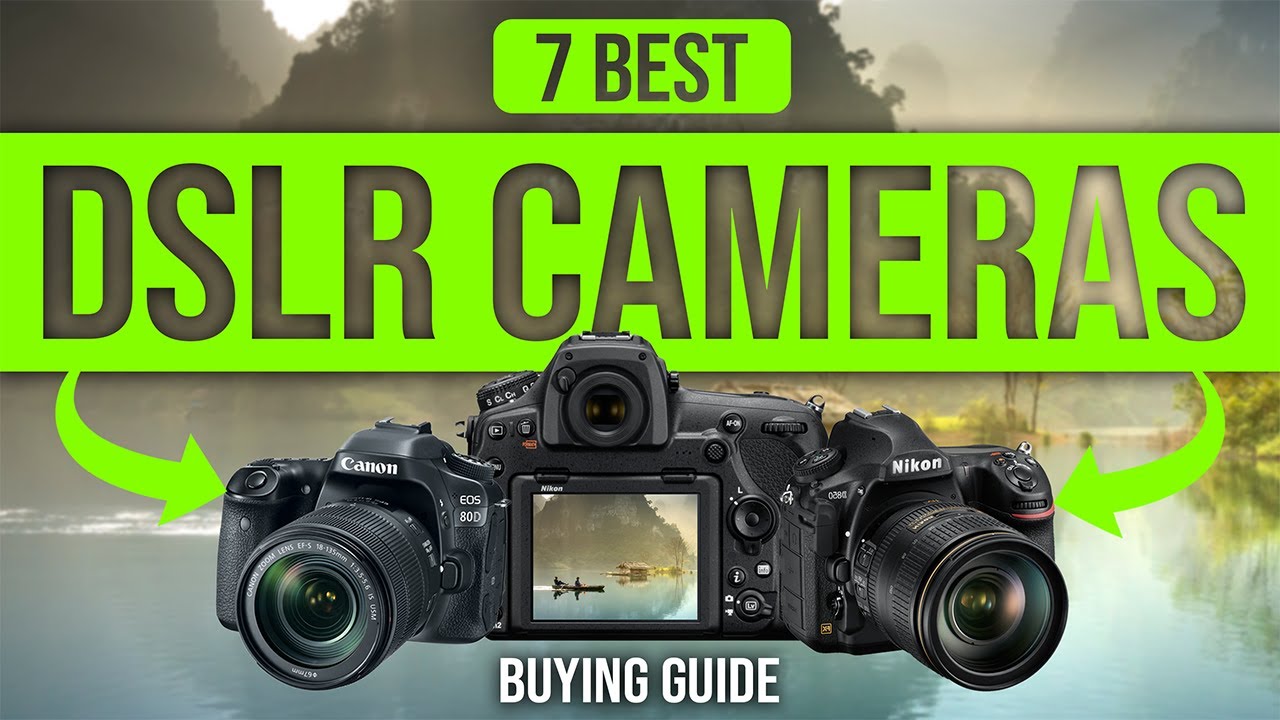Introduction
Welcome to the world of photography! If you’re in the market for a new digital SLR camera, you’ve come to the right place. Whether you’re an aspiring photographer or a seasoned pro, choosing the right camera can make all the difference in capturing breathtaking images that tell a story.
A Digital Single-Lens Reflex (DSLR) camera offers superior image quality, versatility, and control compared to compact or smartphone cameras. With a DSLR, you can explore your creativity, experiment with different lenses, and have full manual control over your shots. But with so many options on the market, how do you know which DSLR camera is right for you?
In this guide, we’ll walk you through the key factors to consider when choosing a digital SLR camera, helping you make an informed decision that fits your photographic needs and budget.
From sensor size and megapixels to autofocus systems and battery life, each feature plays a vital role in determining the overall performance and capabilities of your camera. By understanding these aspects, you’ll be able to find the perfect DSLR that meets your specific requirements.
So, let’s dive in and explore the essential features you should look for when buying a digital SLR camera.
Sensor Size
When it comes to image quality, the size of the camera’s image sensor plays a crucial role. The sensor is responsible for capturing and converting light into digital signals, which ultimately determine the level of detail and dynamic range in your photos.
DSLR cameras usually offer different sensor sizes, ranging from full-frame to APS-C and micro four-thirds. Full-frame sensors are the largest and provide superior image quality, low-light performance, and better depth of field control. They are commonly found in high-end professional DSLR cameras.
APS-C sensors, also known as “crop sensors,” are smaller than full-frame sensors but still offer excellent image quality. They are commonly found in entry-level and mid-range DSLR cameras. The smaller size results in a narrower field of view, effectively magnifying the focal length of lenses used with these cameras.
Micro four-thirds sensors are even smaller, but they excel in portability and compactness. They are commonly found in mirrorless interchangeable-lens cameras, which offer the advantage of having a smaller camera body without compromising image quality.
When considering the sensor size, think about your photography goals and how you plan to use the camera. If you’re a professional photographer or want to venture into fields like landscape or portrait photography, investing in a full-frame camera can result in stunning, detailed images. However, if you’re a beginner or interested in travel or street photography, APS-C or micro four-thirds sensors can still deliver impressive results while being more budget-friendly.
Remember, while sensor size is important, it’s not the only factor that determines image quality. Other features like resolution, ISO sensitivity, and lens quality also contribute to the final result. So, consider your overall needs and make an informed decision based on your photography style and budget.
Megapixels
Megapixels refer to the number of individual pixels in an image captured by a camera sensor. It is often believed that more megapixels result in better image quality, but that’s not always the case.
While a higher megapixel count can provide finer details and allow for larger prints, it’s essential to consider your specific needs. Unless you plan to print your photos in massive sizes or crop extensively, a camera with a moderate megapixel count can still deliver excellent image quality.
It’s worth noting that cramming too many megapixels onto a small sensor can lead to a higher noise level and reduced low-light performance. This is particularly evident in compact or smartphone cameras that boast high megapixel counts but struggle in challenging lighting conditions.
When choosing a DSLR camera, consider the balance between megapixels and sensor size. A larger sensor with a moderate megapixel count can provide better image quality and low-light performance than a smaller sensor with a higher megapixel count.
Keep in mind that the number of megapixels alone should not be the sole determining factor in your decision-making process. Other factors, such as lens quality, image processing capabilities, and the ability to shoot in RAW format, also contribute significantly to the overall image quality.
In summary, if you’re a professional photographer or require large prints and extensive cropping, a higher megapixel count might be beneficial. However, for most photography enthusiasts and hobbyists, a camera with a reasonable megapixel count coupled with a high-quality sensor will provide excellent results for everyday shooting scenarios.
ISO Range
The ISO range of a camera refers to its sensitivity to light. It determines the camera’s ability to capture images in different lighting conditions, whether it’s a bright sunny day or a dimly lit environment.
A wider ISO range provides more flexibility in adjusting the camera’s sensitivity to light. It allows you to capture well-exposed images in low-light situations without the need for additional lighting equipment or a slower shutter speed that may result in motion blur.
When comparing different DSLR cameras, you’ll notice that entry-level models typically offer a narrower ISO range compared to higher-end or professional-grade cameras.
If you mainly shoot in well-lit environments or use external lighting sources, a camera with a narrower ISO range might suffice for your needs. However, if you frequently photograph in challenging lighting conditions, such as concerts or indoor sports events, investing in a camera with a broader ISO range can significantly enhance your ability to capture sharp and noise-free images.
It’s important to note that higher ISO settings often introduce digital noise or graininess in photos. Therefore, in addition to considering the maximum ISO range, also pay attention to the camera’s performance at higher ISO settings. Look for cameras that deliver low noise levels and maintain good image quality even at high ISO values.
Ultimately, the ideal ISO range for your camera will depend on your specific shooting requirements and the type of photography you engage in. If you prioritize shooting in low-light conditions or frequently find yourself in unpredictable lighting situations, a broader ISO range will grant you more control and better image quality.
Autofocus System
The autofocus system of a DSLR camera determines how quickly and accurately the camera can focus on a subject. It plays a crucial role in capturing sharp and well-focused images, especially when shooting fast-moving subjects or in challenging conditions.
When comparing different DSLR cameras, pay attention to the autofocus points and the type of autofocus system they offer. Entry-level models typically have fewer autofocus points and may rely on contrast detection or phase detection autofocus systems. Higher-end models tend to have more autofocus points and more advanced autofocus systems, such as hybrid autofocus or dual pixel autofocus.
The number of autofocus points determines the camera’s ability to track and lock onto a subject. More autofocus points give you more flexibility in composing your shots and ensure accurate focus across the frame.
The type of autofocus system is equally important. Phase detection autofocus systems are typically faster and more reliable, making them ideal for capturing action shots or photographing moving subjects. Contrast detection autofocus, on the other hand, excels in precise focusing and is better suited for still subjects or situations where accuracy is paramount.
It’s also important to consider the performance of the autofocus system in low-light conditions. Some cameras offer autofocus points that are more sensitive to low light, allowing for better focus in dimly lit environments.
When it comes to autofocus, it’s important to find a camera that suits your specific needs. If you primarily shoot landscapes or still subjects, a camera with a basic autofocus system and fewer autofocus points might be sufficient. However, if you’re into sports, wildlife, or action photography, investing in a camera with a more advanced autofocus system and a higher number of autofocus points will greatly enhance your ability to capture critical moments with precision and clarity.
Burst Mode
Burst mode, also known as continuous shooting mode, is a feature that allows you to capture a rapid series of images in quick succession with a single press and hold of the shutter button. It’s particularly useful when photographing fast-paced action, sports events, or any situation where timing is critical.
DSLR cameras offer different burst mode capabilities, which determine the number of frames per second (fps) that the camera can capture. Entry-level models typically have a lower burst mode rate, while higher-end cameras can achieve faster continuous shooting speeds.
When considering burst mode, it’s important to think about the specific types of photography you engage in. If you’re into sports or wildlife photography, where capturing precise moments is crucial, a camera with a higher burst mode rate will give you a better chance of getting the perfect shot.
However, keep in mind that burst mode can quickly fill up your memory card, so ensure you have sufficient storage capacity and fast write speeds to accommodate the rapid-fire shooting. Some cameras also offer buffer depths, which determine the number of consecutive shots that can be captured before the camera slows down or pauses to transfer the images to the memory card.
Additionally, consider if the camera offers a silent mode or a quiet burst mode. These shooting modes reduce the sound produced by the camera’s shutter mechanism, making it less intrusive and suitable for environments where silence is required, such as weddings or wildlife photography.
Overall, burst mode is a valuable tool for photographers who frequently capture fast-moving subjects or seek to capture a sequence of moments in a single burst. When deciding on a camera, choose one that provides a burst mode rate and buffer depth that align with your photography style and requirements.
Image Stabilization
Image stabilization is a vital feature in a DSLR camera that helps reduce camera shake and ensures sharp and crisp images, especially when shooting handheld or in low-light conditions. It compensates for small movements or vibrations to deliver clearer, blur-free photos.
There are two main types of image stabilization: optical image stabilization (OIS) and sensor-shift image stabilization (IBIS). OIS is typically found in lenses, while IBIS is built directly into the camera body. Both systems aim to counteract camera shake, but they work in slightly different ways.
OIS relies on floating lens elements or gyroscopic sensors to detect and counteract the movement of the lens. This type of stabilization is effective for reducing camera shake and achieving steady shots, especially when using telephoto lenses or shooting at longer focal lengths.
IBIS, on the other hand, shifts the camera’s image sensor to compensate for any camera movement. This system is beneficial because it stabilizes any lens attached to the camera, regardless of whether it has built-in stabilization. IBIS is particularly useful when using prime lenses or vintage lenses that lack optical stabilization.
Having image stabilization in your camera can greatly improve your ability to capture sharp images, especially in challenging shooting situations. It allows you to use slower shutter speeds without worrying about introducing blur due to shaky hands or camera movement.
However, it’s essential to note that image stabilization cannot completely eliminate all types of motion blur. It is most effective for combating minor camera shake, but it may not be sufficient for freezing motion in fast-moving subjects. In such cases, a faster shutter speed or external stabilization equipment may be necessary.
When selecting a DSLR camera, consider whether it has built-in image stabilization or if it is compatible with lenses that have optical image stabilization. Having either of these options can significantly improve your chances of capturing sharp and blur-free images, especially when shooting handheld or in challenging lighting conditions.
Manual Control Options
One of the significant advantages of a DSLR camera is the level of control it offers over your photography settings. Having full manual control allows you to take complete creative control over your images and achieve the desired results.
When considering a DSLR camera, pay attention to the manual control options it provides. This includes the ability to adjust settings such as aperture, shutter speed, and ISO manually.
Aperture control allows you to adjust the size of the camera’s aperture, regulating the amount of light that enters the lens. This gives you control over depth of field, allowing you to create images with blurred backgrounds or sharp details throughout the frame.
Shutter speed control determines the length of time the camera’s shutter remains open. It affects the amount of light that reaches the sensor and allows you to capture fast-moving subjects or create long-exposure images to convey motion or capture star trails.
ISO control enables you to adjust the camera’s sensitivity to light. Higher ISO settings are useful in low-light situations, but they can introduce digital noise into your images. Being able to manually control ISO allows you to strike the right balance between capturing enough light and maintaining image quality.
Manual control options also extend to other settings such as white balance, metering modes, and focusing modes. These allow you to fine-tune your camera settings to match the specific lighting conditions and achieve accurate color reproduction and exposure.
In addition to manual control options, consider the ease of adjusting these settings on the camera itself. Look for cameras with well-laid-out controls, intuitive menus, and customizable buttons or dials that allow you to access and adjust settings quickly and efficiently.
Being able to have full manual control over your camera settings empowers you to unleash your creativity and experiment with different techniques. It allows you to adapt to various shooting conditions and capture images that reflect your unique vision.
Whether you’re a beginner or an experienced photographer, having manual control options is essential for growth and development in your photography journey. It gives you the flexibility to explore different styles, techniques, and lighting scenarios, enabling you to produce stunning and personalized images.
Viewfinder
The viewfinder is an essential component of a DSLR camera that allows you to compose and frame your shots. It provides a clear and direct way to see the scene you are about to capture without distractions or reflections.
DSLR cameras offer two main types of viewfinders: optical and electronic.
An optical viewfinder (OVF) uses a system of mirrors and prisms to provide a real-time, through-the-lens (TTL) view of the scene. This type of viewfinder offers a clear and natural view, allowing you to see the subject and the surrounding environment accurately. It provides a seamless and immersive experience, with no lag or delay.
On the other hand, an electronic viewfinder (EVF) utilizes a small LCD or OLED screen to display a digital representation of the scene. EVFs offer benefits such as live exposure preview, real-time image adjustments, and overlays to show electronic levels, histogram, and focus peaking. This can be particularly helpful for beginners or those who want a more accurate representation of the final image before pressing the shutter button.
Both types of viewfinders have their advantages and drawbacks. Optical viewfinders provide a more direct and immersive viewing experience, especially in bright outdoor conditions, where electronic viewfinders may struggle to provide a clear image. However, electronic viewfinders offer additional information and customization options, making them preferable for some photographers.
When considering a DSLR camera, try out both types of viewfinders to see which one feels the most comfortable and suits your shooting style. Keep in mind that higher-end DSLR models tend to have brighter, larger, and more advanced viewfinders that enhance the overall shooting experience.
In recent years, some cameras have introduced hybrid viewfinders that combine the benefits of both optical and electronic systems. These viewfinders offer the option to switch between the two modes, providing additional flexibility and convenience.
Always ensure that the viewfinder is clear, bright, and provides accurate framing. The ability to clearly see your subject and make precise adjustments contributes to capturing the image exactly as you envision it.
Ultimately, the viewfinder is an integral part of the DSLR camera and plays a significant role in helping you compose and capture your shots with confidence and accuracy.
LCD Screen
The LCD screen on a DSLR camera serves as a valuable tool for image review, menu navigation, and live view shooting. It provides a clear and convenient way to preview your images, adjust settings, and compose your shots.
DSLR cameras typically have a rear-mounted LCD screen, which varies in size and resolution. When considering a DSLR, take into account the size and quality of the LCD screen, as it directly impacts the overall user experience.
A larger LCD screen allows for better image review and menu navigation, making it easier to assess image quality and adjust settings. It provides a more comfortable and immersive viewing experience, especially when scrutinizing details or assessing image sharpness.
The resolution of the LCD screen is also crucial. A higher resolution provides sharper image reproduction, allowing you to better judge focus accuracy and image quality. It ensures that the LCD screen displays images with clarity and minimizes pixelation or loss of detail.
In addition to size and resolution, consider the functionality of the LCD screen. Many DSLR cameras offer touchscreens, which provide intuitive control and allow for quick adjustments by tapping or swiping on the screen. Touchscreens also facilitate touch-to-focus and touch-to-shoot capabilities, making it easier to focus on a specific area or select a focus point.
Another useful feature to look for is articulation or tilt support on the LCD screen. This allows the screen to be tilted or rotated, providing flexibility when shooting from high or low angles, or even for vlogging and self-portraits. Articulating screens are particularly beneficial for shooting in awkward or tight spaces that may require unconventional shooting positions.
Furthermore, some cameras offer an electronic level display on the LCD screen. This feature helps you ensure that your camera is level and aligned correctly, especially when shooting landscapes or architecture where straight lines are crucial.
Considering the LCD screen is important as it serves as your window into the camera’s settings and image review. It should be clear, bright, responsive, and well-designed to provide a seamless and user-friendly experience.
Remember that the LCD screen is not just for image review; it is also an interface for accessing menus, settings, and options. Therefore, a well-designed LCD screen is an essential aspect of a DSLR camera, enhancing your ability to control the camera and capture the shots you desire.
Connectivity Options
Connectivity options in a DSLR camera allow you to transfer, share, and control your images wirelessly, expanding your creative possibilities and streamlining your workflow. When considering a DSLR camera, it’s important to evaluate the available connectivity options to ensure they meet your specific needs.
One common connectivity option is Wi-Fi, which enables you to connect your camera to a compatible device such as a smartphone, tablet, or computer. With Wi-Fi, you can transfer photos wirelessly, making it convenient for sharing images on social media, sending them to clients, or backing them up to the cloud. Some cameras also allow remote control through a smartphone app, allowing you to adjust settings and capture photos remotely.
Another popular connectivity feature is Bluetooth, which provides a low-power connection between your camera and other devices. Bluetooth allows for seamless and continuous image transfer, remote control, and synchronization with compatible accessories or apps. It’s particularly handy for quickly transferring images to your smartphone while shooting, without the need for Wi-Fi or cables.
NFC (Near Field Communication) is another connectivity option found in some DSLR cameras. It simplifies the process of establishing a connection between your camera and a compatible device. By simply tapping the camera and the device together, you can quickly establish a connection for image transfer or remote control.
Some higher-end DSLR models also offer built-in GPS functionality, which allows you to geotag your images with location data. This feature is useful for landscape, travel, and documentary photographers who want to keep track of where their photos were taken.
Additionally, many DSLR cameras have a built-in HDMI port, enabling you to connect your camera directly to a TV, monitor, or projector for live view display or image playback. This is beneficial for reviewing images on a larger screen or sharing your work in presentations or group settings.
When considering connectivity options, it’s worth noting that not all DSLR cameras have the same features. Some entry-level models may have limited connectivity options or omit certain features to keep costs down. Therefore, it’s important to assess your specific needs and choose a camera that offers the connectivity capabilities that align with your workflow and intended use.
Connectivity options in a DSLR camera can greatly enhance your photographic experience, allowing you to easily share your work, control your camera remotely, and streamline your workflow. Consider the available connectivity features when selecting a camera to ensure you have the flexibility and convenience desired for your photography needs.
Battery Life
Battery life is a crucial consideration when selecting a DSLR camera, as it determines how long you can shoot without needing to recharge or replace the battery. Having a sufficient battery life is important, especially during long shooting sessions or when you’re unable to access a power source.
DSLR cameras use rechargeable lithium-ion batteries, and the battery life can vary significantly between different models. Battery life is measured in the number of shots you can take on a single charge or the amount of time the camera can remain powered on.
When comparing battery life between cameras, it’s important to consider multiple factors. First, the capacity of the battery itself plays a significant role. Higher-capacity batteries are generally able to power the camera for a longer duration.
Secondly, the power consumption of the camera’s components also affects battery life. Features such as the LCD screen, image stabilization, continuous autofocus, and Wi-Fi connectivity can drain the battery more quickly. Therefore, understanding how your photography style and shooting conditions might impact power usage is important when evaluating battery life.
In addition, extreme temperatures can affect battery performance. In cold weather, batteries tend to drain faster, while in hot conditions, battery life may be reduced. It’s essential to keep this in mind if you plan to shoot in challenging environments.
One way to extend battery life is by using power-saving features or adjusting settings that are not necessary for your current shooting conditions. For example, reducing the brightness of the LCD screen or utilizing sleep or power-off settings can help conserve battery power. Carrying spare batteries or using a battery grip that holds multiple batteries can also provide you with extra shooting time on the go.
Remember to invest in genuine and high-quality batteries and chargers recommended by the camera manufacturer. Using third-party batteries may offer cost savings, but they may not perform as efficiently or have the same lifespan as the originals.
Ultimately, the battery life of a DSLR camera can greatly impact your shooting experience. It’s important to select a camera that offers a sufficient battery life, taking into account your shooting needs, expected usage patterns, and the availability of charging options during your photography sessions.
Size and Weight
The size and weight of a DSLR camera can have a significant impact on your shooting experience, especially if you plan to carry it with you for extended periods or in challenging shooting conditions. When considering a DSLR camera, evaluating its size and weight relative to your needs and preferences is essential.
DSLR cameras come in a range of sizes and weights, from compact and lightweight models to larger and heavier professional-grade bodies. The size and weight of the camera are influenced by factors such as the type and size of the image sensor, the construction materials, and the presence of additional features or components.
If portability is a priority for you, consider opting for a compact or lightweight camera body. These models are generally more convenient to carry around and are suitable for travel or outdoor photography. They are also more comfortable to hold for extended periods, making them ideal for street, documentary, or event photography.
However, if you prioritize advanced features, robust build quality, and a more substantial grip, you may opt for a larger and heavier camera body. These models often offer enhanced durability, weather sealing, and improved ergonomics. They are commonly preferred by professional photographers or those who frequently shoot in challenging environments.
Size and weight considerations also extend to the selection of lenses. Different lenses have varying dimensions and weights, and they can significantly affect the overall portability and ergonomics of the camera system. Keep this in mind when choosing lenses to ensure a comfortable and balanced shooting experience.
It’s worth noting that larger and heavier cameras may provide advantages such as better handling, more physical controls, and improved battery life. On the other hand, lighter and more compact models offer increased convenience and ease of use, particularly for users who value mobility and simplicity.
Ultimately, the size and weight of a DSLR camera should align with your shooting style, preferences, and intended use. Consider factors such as the types of photography you participate in, the conditions in which you plan to shoot, and your comfort level in handling different camera sizes and weights.
Before making a purchase, try holding and testing different camera models to get a sense of their size, weight, and ergonomics. This will allow you to make an informed decision and select a camera that feels comfortable and suits your shooting needs.
Price and Budget
Price is an important factor to consider when choosing a DSLR camera, as it determines the range of models and features available to you. Setting a budget and understanding your photography needs will help you make a well-informed decision.
The price of a DSLR camera can vary significantly depending on factors such as the brand, model, sensor size, build quality, and additional features. Entry-level DSLR cameras are generally more affordable, making them suitable for beginners or hobbyists. These models offer a good balance of image quality, performance, and usability at a budget-friendly price.
As you move up the price range, you’ll find more advanced features, improved build quality, and higher-end specifications. Mid-range DSLR cameras often provide more customizable options, better autofocus systems, faster burst rates, and increased durability. Professional-grade DSLRs, on the other hand, offer top-of-the-line performance, exceptional image quality, robust construction, and extensive control over settings.
When budgeting for a DSLR camera, consider not only the initial cost of the camera body but also the cost of additional accessories such as lenses, memory cards, tripod, and carrying case. These expenses should be factored into your overall budget to ensure you have a complete camera system that meets your requirements.
However, it’s important to note that a higher price does not always equate to better image quality or performance. Consider your specific photography needs and the features that are essential to your style of shooting. It may be more cost-effective to invest in a mid-range DSLR camera that offers the capabilities you need, rather than purchasing a high-end model with features you may not often utilize.
Additionally, keep in mind that the price of DSLR cameras can fluctuate over time due to factors such as new product releases, market demand, and technological advancements. It’s worth doing thorough research and comparing prices from different retailers to ensure you’re getting the best value for your budget.
Consider exploring the used or refurbished market as well, as it can offer significant savings without compromising the quality or functionality of the camera. Many reputable retailers and camera manufacturers provide certified refurbished options that come with a warranty, ensuring a reliable purchase at a lower cost.
Overall, determining your budget and understanding your photography needs are essential steps in the process of choosing a DSLR camera. It allows you to prioritize features, weigh the cost-effectiveness of different models, and find the best camera that suits your budgetary constraints.
Conclusion
Choosing the right DSLR camera is an exciting and important decision for any photographer. With a multitude of features and options available, it’s crucial to consider the factors that align with your photography goals, preferences, and budget.
By evaluating aspects such as sensor size, megapixels, ISO range, autofocus system, burst mode, image stabilization, manual control options, viewfinder, LCD screen, connectivity options, battery life, size and weight, and price, you can make an informed choice that best suits your needs.
Remember that each feature contributes to the overall performance and capabilities of the camera. However, it’s important to strike a balance and prioritize the features that are most crucial for your style of photography. Not every feature will be essential for every photographer, so focus on the ones that matter most to you.
Additionally, consider the ergonomics and comfort of the camera, as well as the availability and quality of compatible lenses and accessories. Having a camera that feels comfortable to hold and operate can greatly enhance your shooting experience.
Before finalizing your decision, it’s a good idea to try out different camera models in person, if possible, and read reviews from trusted sources. This will give you a better understanding of how the camera feels in your hands and performs in real-world situations.
Whether you’re a beginner looking to explore the world of photography or a seasoned professional looking to upgrade your gear, finding the right DSLR camera is a key element in capturing stunning, high-quality images that tell your unique story.
Take the time to research, evaluate your needs, and consider your budget. With careful consideration, you can choose a DSLR camera that will be a companion on your photographic journey, enabling you to unleash your creativity and capture memorable moments for years to come.







